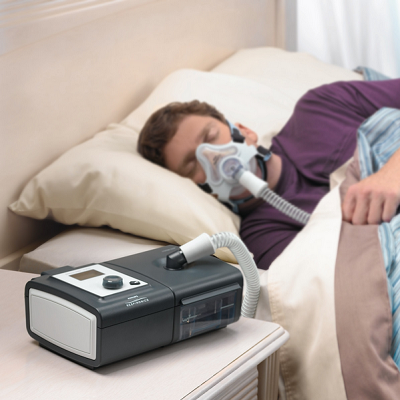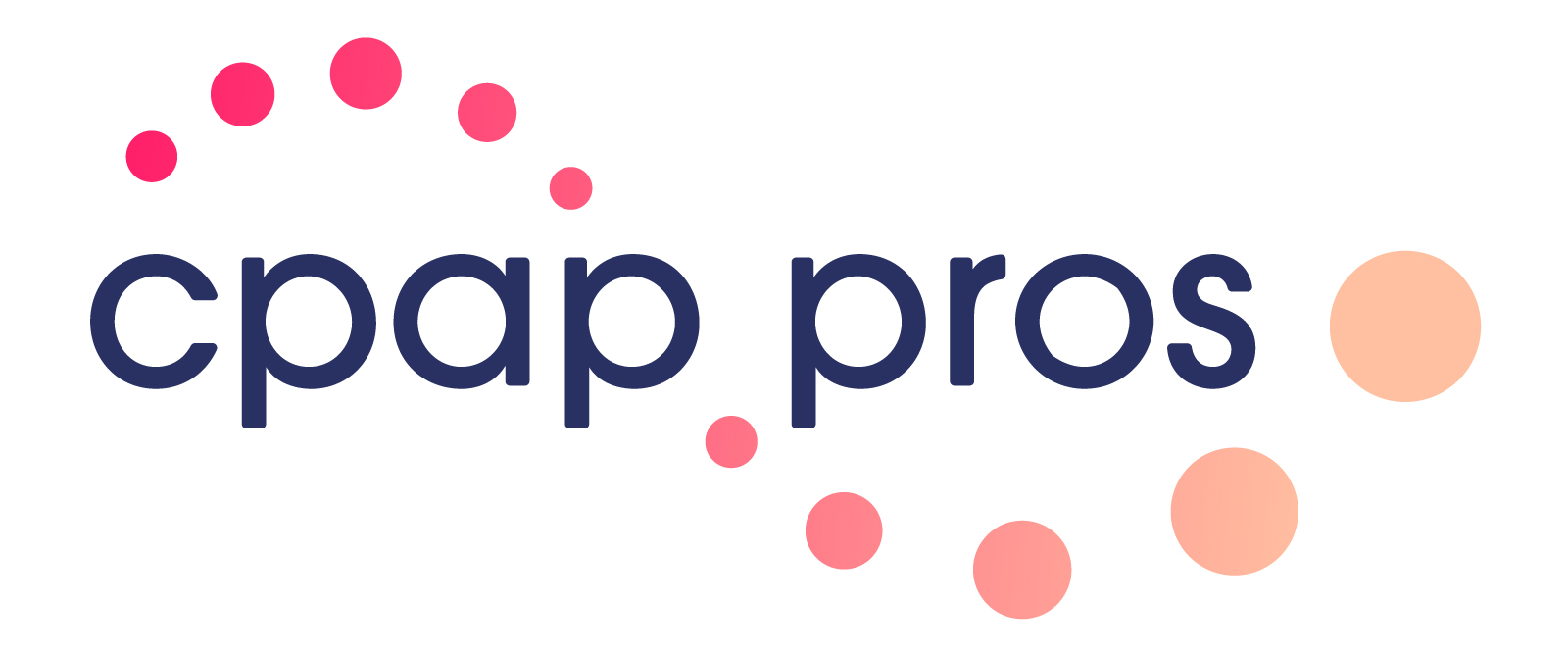Sleep Apnea Treatment
CPAP Therapy
CPAP stands for Continuous Positive Airway Pressure.
A CPAP machine is set based on a prescription from a doctor in order to gently blow pressurized air through your airway at night to keep your throat from collapsing.
It is the most common treatment for Obstructive Sleep Apnea.
When you use CPAP, your bed partner may sleep better too. You may feel more alert during the day, your snoring will go away, your blood pressure will start to decrease, and your mood and memory can improve.
The more you use your CPAP, the better you will feel. It works best when used every night, for the entire time you are sleeping.
CPAP, APAP and Bilevel Therapy
Positive airway pressure therapy can be delivered in a number of ways:
- Continuous positive airway pressure (CPAP), which delivers air at a fixed pressure.
- Automatic positive airway pressure (APAP), which automatically adjusts pressure levels based on a patient’s breathing. APAP may be suitable for patients with REM-related sleep apnea, positional apnea or who experience noncompliance with standard CPAP therapy.
- Bilevel therapy, which provides higher inspiratory pressure and lower expiratory pressure. Bilevel can be effective for patients who are non-compliant with CPAP, and is often an effective treatment for a range of respiratory disorders, including central sleep apnea.
CPAP Machines
CPAP machines are composed of 3 main parts:
1. CPAP Motor
The CPAP motor is basically a small compressor. These are now designed to be very quiet. It draws in room air and gently pressurizes it to deliver the perfect amount of air pressure that you need to clear the obstruction in your airway. The air intake portion of the machine has a replaceable filter that screens out particulates and impurities.
Most newer CPAP machines also have a small water tank that, when turned on, heats up the water to provide moisture to the air you breathe in. These built-in humidifiers are ideal for people living in dry climates and those that frequently wake with dry mouth or throat.
2. CPAP Hose
The hose is simply the delivery device that transports the pressurized air from the motor to the CPAP mask. While most hoses are 6 feet in length, the diameter of the hoses can be different depending on the machine that one uses. Most hoses are now heated to reduce water condensation accumulation caused by the humidifiers.
3. CPAP Mask
Most masks fall into one of three categories, nasal pillow that has soft plastic that fits into each nostril, a nasal mask, or a full face masks that covers the nose and mouth.
The good news is that if one CPAP mask or device doesn’t work for you, there are many options. Everyone has a unique facial structure which is why it is so important to find the correct fitting mask for you. There are tools available online which can help you find the correct fitting mask.
Click here for the Resmed Mask Selector Tool.
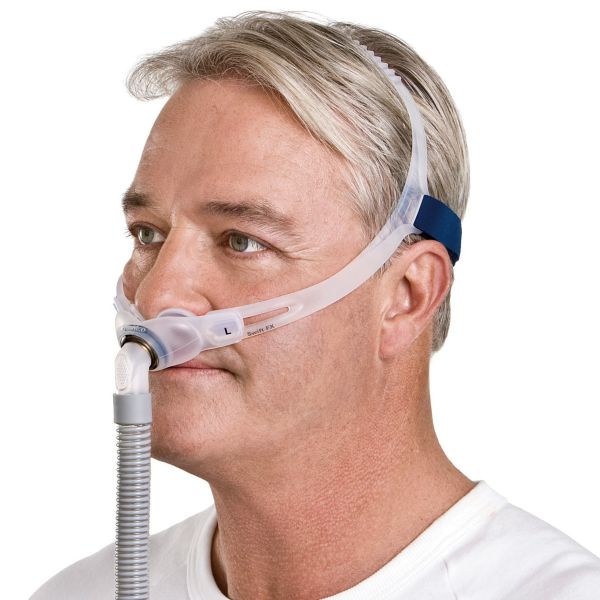
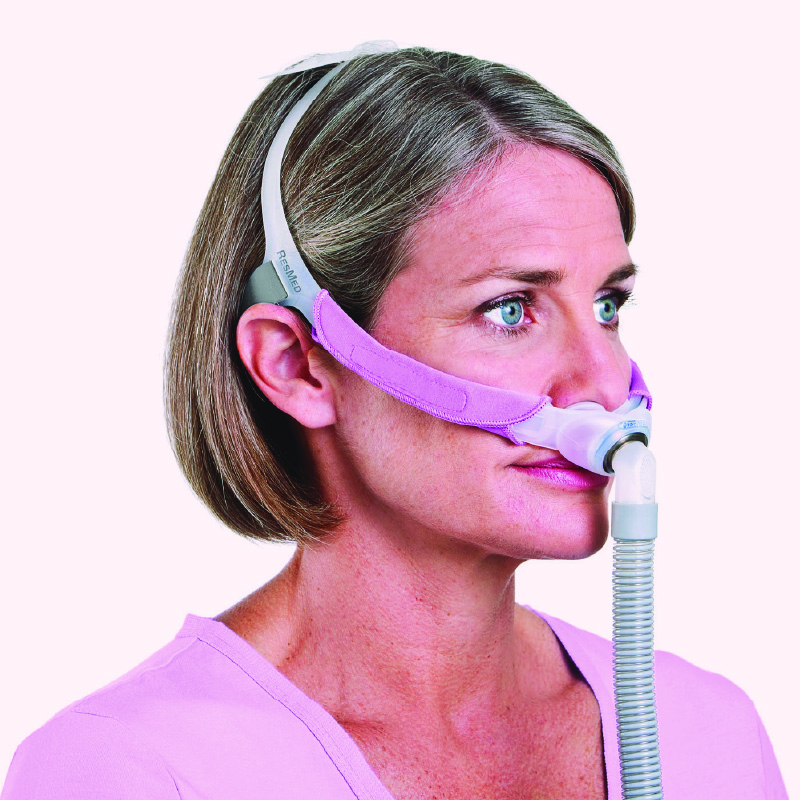
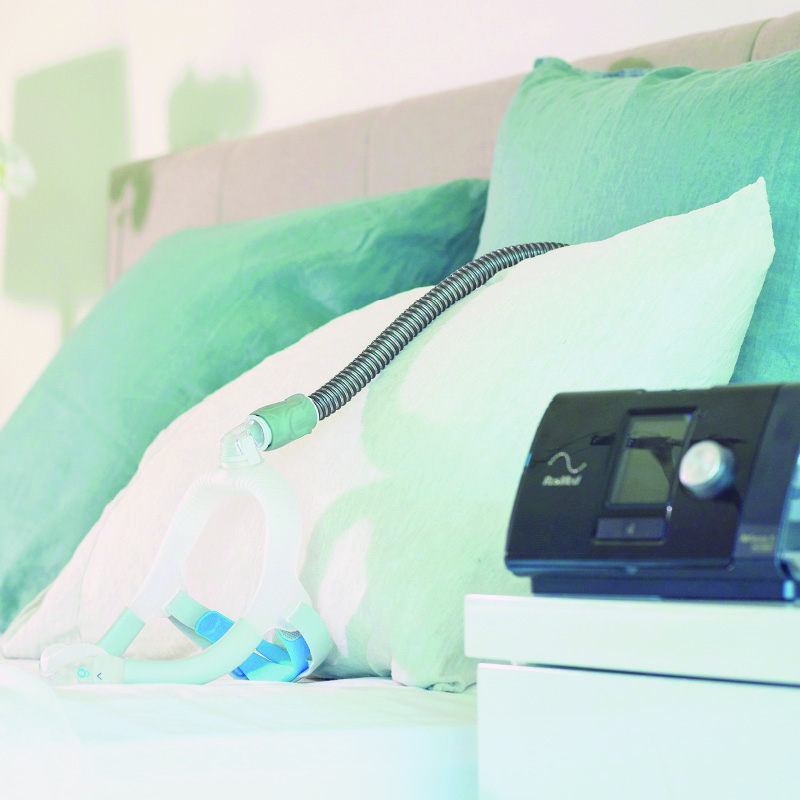
ResMed PAP Devices
AirSense™10 AutoSet CPAP with Integrated Humidifier
The ResMed AirSense™ 10 AutoSet is a premium auto-adjusting device for treating sleep apnea. It automatically adjusts pressure levels to fit your changing needs to ensure you’re receiving the lowest pressure necessary. It features an integrated humidifier and built in wireless communications, helping you to stay comfortable and more connected to your sleep apnea care team than ever before.

AirSense™11 CPAP Machine
Combining enhanced digital health technology with effective therapy modes, ResMed AirSense™ 11 APAP and CPAP machines are designed to make starting sleep apnea therapy, and adhering to it, easier and more convenient than ever before.
Each machine includes access to an easy-to-use online support program and app, designed to help you get started and adjust to therapy.
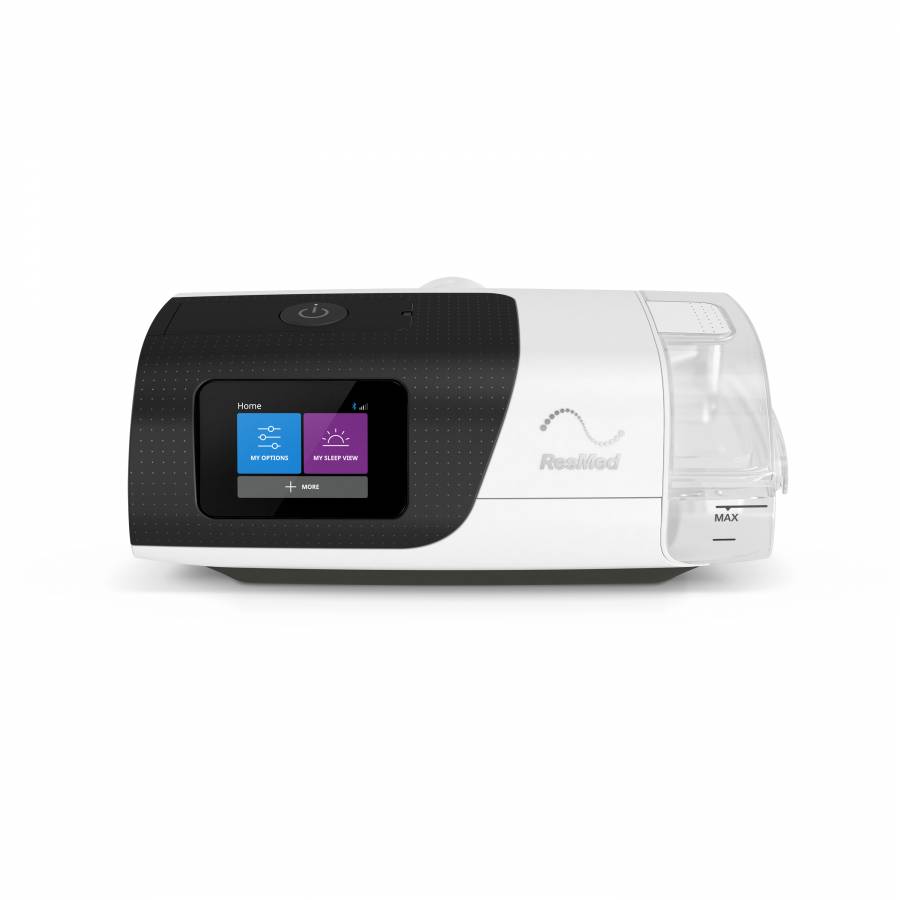
AirCurve™ 11 VAuto Package
ResMed AirCurve™ VAuto is an auto-adjusting bilevel machine that uses the comfort of both the AutoSet algorithm and Easy-Breathe waveform in its VAuto algorithm to treat obstructive sleep apnea patients who can benefit from greater pressure support. The AirCurve 11 VAuto adjusts the baseline pressure to hold the airway open while maintaining a fixed pressure support. Package includes heated tubing, CPAP mask of your choice, extra filters, and cleaning supplies. You will have everything you need to begin your CPAP Therapy.
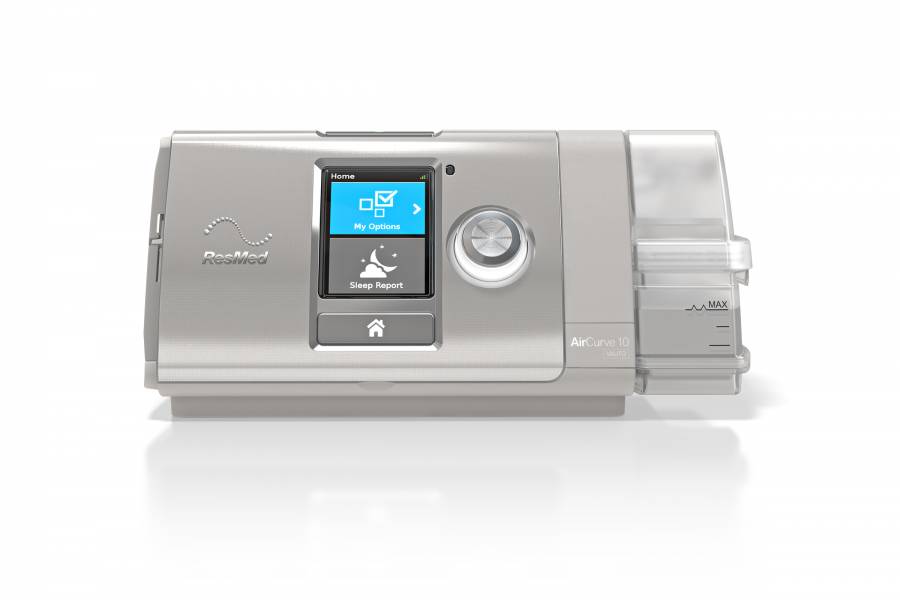
When Experience Matters
It’s important to work closely with your CPAP provider to make sure you have a mask that fits you properly. Most masks come in different sizes. Just because you’re a certain size in one mask doesn’t mean you’ll be the same size in another.
There are a large range of CPAP mask styles and sizes, depending on your unique needs.
A CPAP Pro Sleep Specialist will show you how to adjust your mask to get the best fit and maximize comfort.
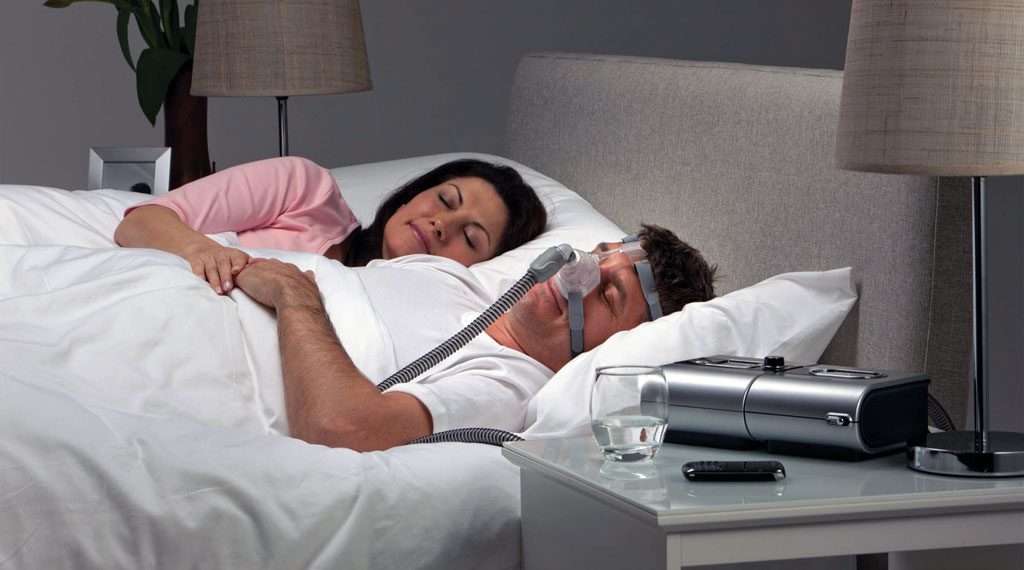
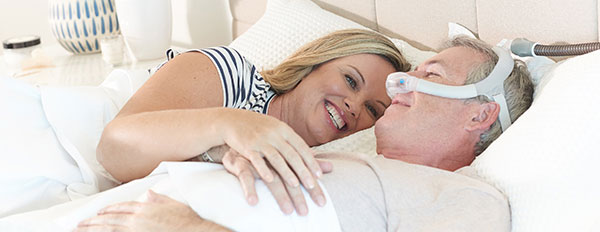
Some masks feature Nasal Pillows that fit into your nose and straps that cover less of your face. These can be less cumbersome, but may not work well if you require higher levels of air support.

Nasal Masks may work well if you wear glasses or read with the mask on, because some styles obstruct vision less than do full face masks. However, they may not work if you move around a lot in your sleep or sleep on your side.
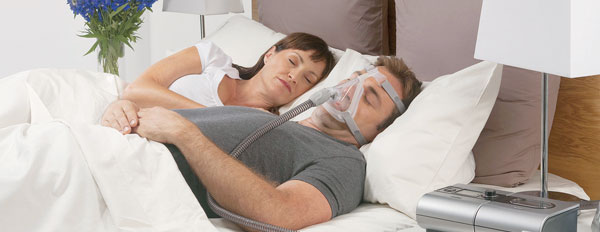
Some CPAP masks are Full Face which cover your nose and mouth, with straps that stretch across your forehead and cheeks. These may be less comfortable, but they work well at providing a stable fit if you move around a lot in your sleep. Full Face masks also work well if you tend to breathe mostly from your mouth while you sleep.
Getting started with CPAP
Follow these tips to improve your quality of sleep with CPAP:
1. Begin using your CPAP for short periods during the day before bedtime in order to give your brain a chance to adjust to the feeling and affects of the therapy. Even twenty minutes while reading or watching TV will help.
2. CPAP is not a quick fix for your problem. It involves a long-term commitment to improve your sleep and your health. Make CPAP part of your bedtime routine.
3. Make sure your mask is a good fit. The most common problems with CPAP occur when the mask does not fit properly.
- Increase your level of comfort by using a saline spray, decongestant or heated humidifier if CPAP irritates your nose, mouth or throat. Use your unit’s “ramp” setting to slowly get used to the air pressure level.
- Use a humidifier if you have a dry mouth, throat or nose.
- Clean your mask and tubing on a regular basis. It is recommended to clean your mask daily and your tubing and humidifier chanber at least once a week. Put this reminder in your schedule so that you don’t forget to do it. It is also recommended that you check and replace the filters on a regular basis.
- If you are having problems remembering to use your CPAP every night, find someone to help.
- Make small adjustments to the mask straps to increase your level of comfort.
4. If the pressure feels too high as you are trying to fall asleep, use the “ramp” mode on your CPAP unit, or ask for assistance.
5. Your adjustment to CPAP will be easier if you are able to connect with others who use the same treatment. Explore www.cpaptalk.com as a good source of online support who for people who have sleep apnea. Remember it takes some patients longer than others to adjust to CPAP therapy.

